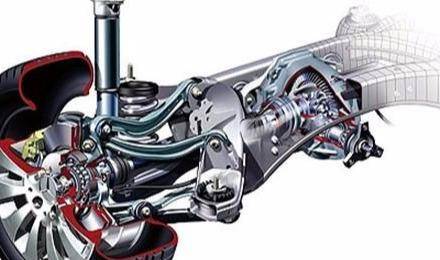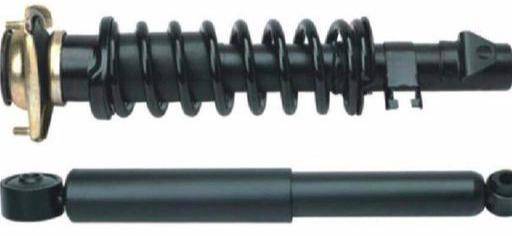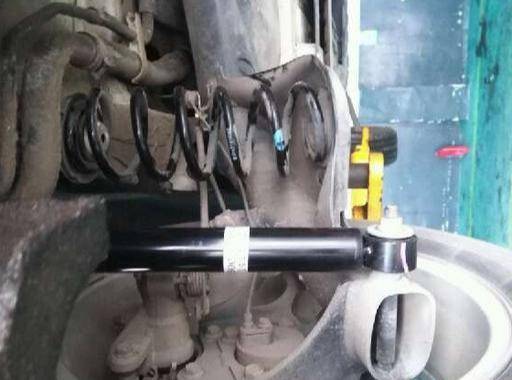The timely replacement of car parts is crucial to ensure our vehicles operate smoothly, avoiding malfunctions and potential hazards. Each part has a recommended replacement cycle, and these cycles vary greatly depending on the brand. However, many experienced drivers often overlook the replacement cycle and lifespan of their shock absorbers. Typically, if shock absorbers are not replaced by the time the car reaches 100,000 kilometers, the lifespan of the vehicle is nearing its end!

What are shock absorbers?
Shock absorbers refer to the “cylinder” within the entire suspension system of a car!
Main function: To significantly reduce the effects of car vibrations and suppress any excessive spring force issues!
Main impacts: Once shock absorbers wear out, they can lead to excessive tire wear, affect the braking distance during emergency braking, and impact the vehicle’s handling performance!
Replacement cycle: Experts recommend checking them every 60,000 kilometers, and it’s more appropriate to replace shock absorbers every 80,000 kilometers. If shock absorbers are not replaced promptly after exceeding 100,000 kilometers, it will shorten the lifespan of the vehicle!

How to determine when car shock absorbers need to be replaced?
Scenario One: In sections of poor road conditions, if you notice significant vibrations in the car, accompanied by a noticeable bouncing sensation and even causing passengers to feel nauseous, it indicates that the car’s shock absorbers need to be replaced promptly!
Scenario Two: When driving, if you feel significant body roll and longer braking distances, it also suggests that you need to replace the shock absorbers promptly!
Scenario Three: If the car’s noise levels increase while the oil change and lubrication cycle remains timely, then check if the shock absorbers have reached the end of their lifespan!
Scenario Four: If the car tends to veer when braking frequently, or if there’s excessive bouncing when passing over speed bumps, it indicates that the shock absorbers have failed!

Is replacing the shock absorbers sufficient for addressing similar issues?
In general, when encountering the aforementioned situations, simply replacing the shock absorbers is often sufficient. However, concerning the structure of a car’s suspension system, it’s not solely reliant on the function of the shock absorbers. There are many components responsible for maintaining the proper operation of the shock absorbers, such as issues with the shock absorber’s oil seal gasket, cylinder head nuts, shock absorber sticking, or obstructions.
When a car owner identifies issues with the shock absorbers, it’s crucial to first check whether the problem stems from issues with the oil seal gasket, or if there are any abnormalities in the supply of engine oil and lubricants. If everything appears normal, then replacing the shock absorbers directly should suffice!
Do car shock absorbers need to be replaced in pairs?
In general, when the lifespan of your car’s shock absorbers reaches a certain point, it’s advisable to replace both shock absorbers simultaneously. However, if your car is relatively new and hasn’t covered a significant mileage, it’s recommended to first inspect the specific condition of the shock absorbers. Based on the assessment, you can then decide whether replacement is necessary for both shock absorbers.
What issues should be noted when replacing shock absorbers?
Attention One: It is recommended to use original factory shock absorbers for replacement.
Currently, the majority of shock absorbers on the market are from the original factory, and they are generally sold as complete assemblies. These assemblies include the shock absorber core, tray, and bearing, with the original factory shock absorbers having the highest level of fit. Alternatively, you can choose shock absorber components from well-known brands such as KYB and MEILENG, which offer longer warranties and are highly recognized. Compared to original factory parts, branded parts offer higher flexibility and usually allow for the selection of individual components such as the shock absorber core, tray, and bearing for separate replacement.
Attention Two: Perform four-wheel alignment correction promptly after replacing shock absorbers.
Whether it’s a small workshop or a 4S dealership, replacing car shock absorbers requires disassembly and assembly operations. Generally, non-independent rear shock absorbers do not require four-wheel alignment. However, in all other cases, after installing the shock absorbers, it is necessary to promptly adjust the position of all four wheels!


Leave a Reply